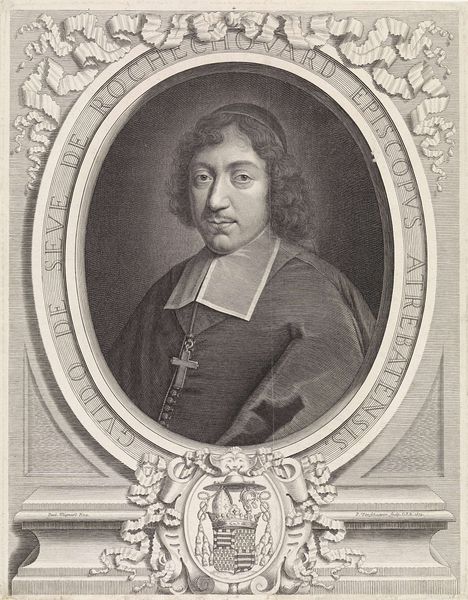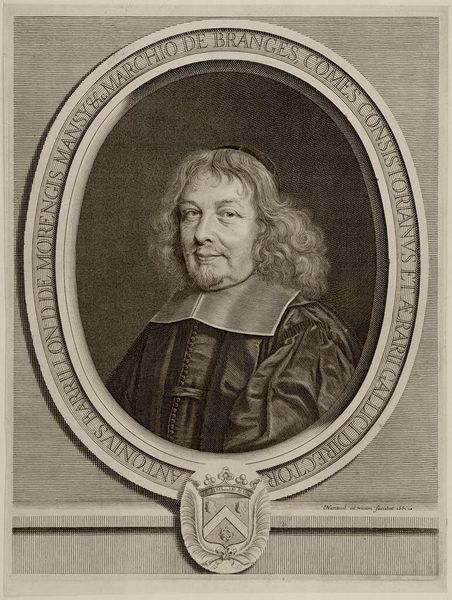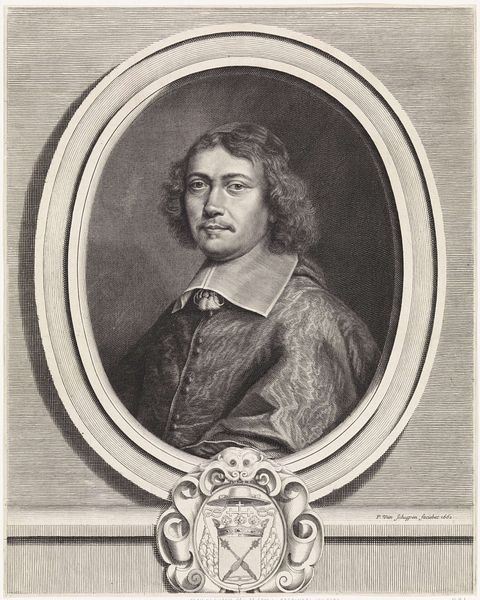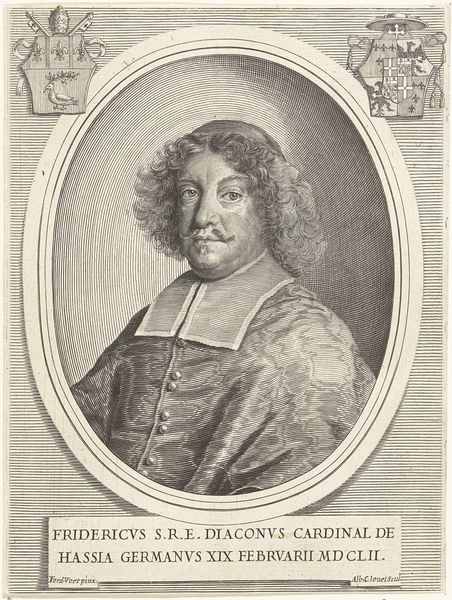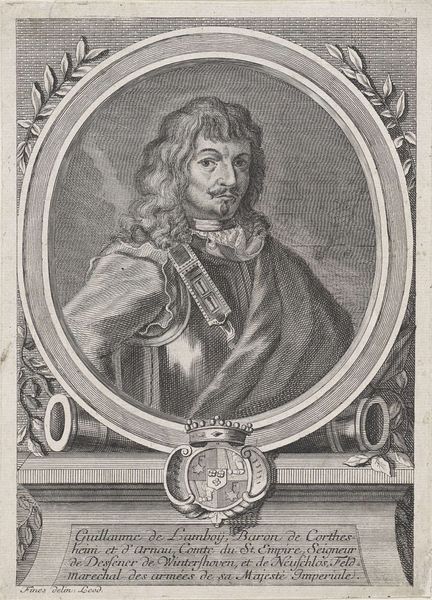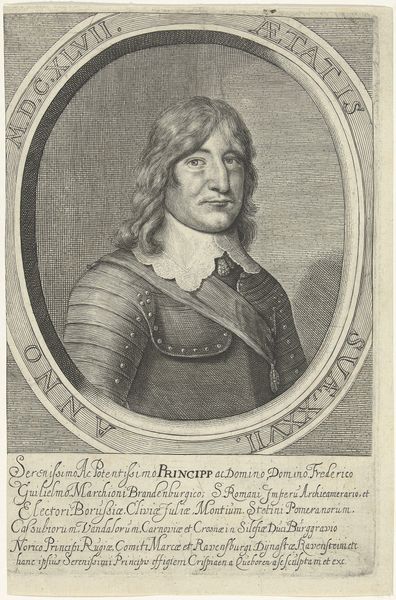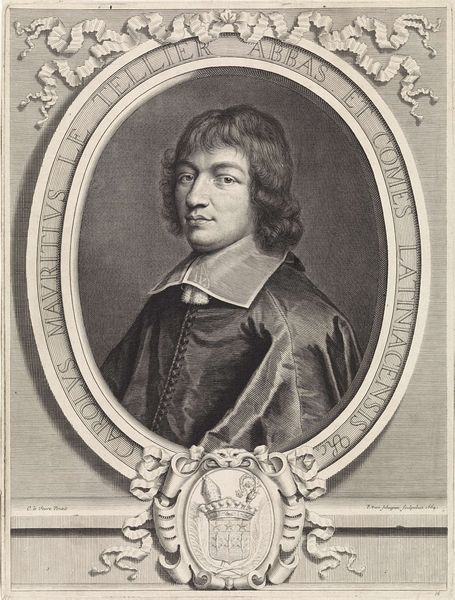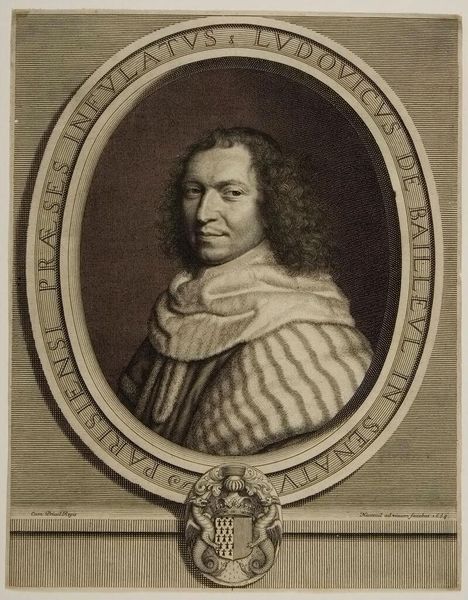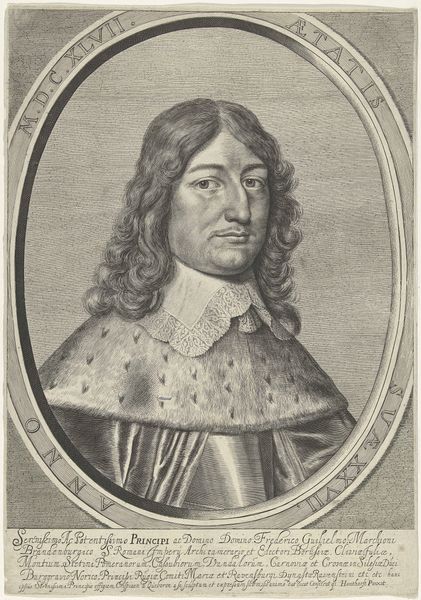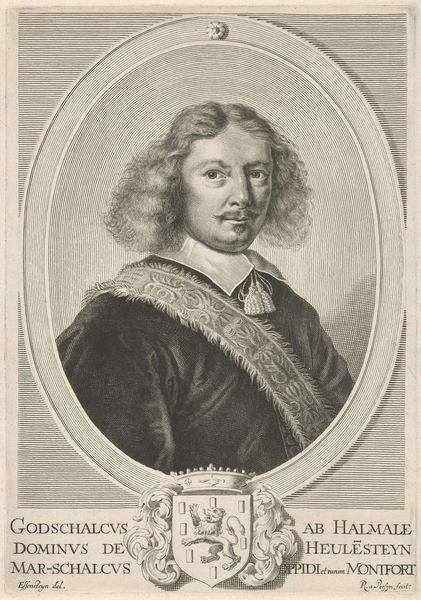
print, metal, engraving
#
portrait
#
baroque
# print
#
metal
#
engraving
Dimensions: height 166 mm, width 112 mm
Copyright: Rijks Museum: Open Domain
Curator: Metal engraving: It’s fascinating to consider the labor and resources invested in producing something like this "Portret van Jean Louis de Fromentières," made by Pieter van Schuppen in 1688 or 1689. Editor: Yes, it’s currently at the Rijksmuseum. It's such a precise and detailed piece. It looks like a powerful man. What can you tell me about the choices behind this work? Curator: Think about the process itself. The engraver meticulously carving into a metal plate to produce this image. Consider the social context: who commissioned this? Who was meant to see it? The print medium would have made this image somewhat widely available. The choice of clothing and adornments were undoubtedly quite purposeful. Editor: Right, so this print could circulate images of important people and power. How does that influence its importance as a piece of art? Curator: We can analyze the power dynamics inherent in image production and consumption during the Baroque period. Who controlled access to these images? What messages were they designed to convey? It moves beyond simple aesthetics. We have to look at who benefitted from it, whose labor made it happen. Editor: So, not just admiring the final product, but also investigating how it came to be and how it functioned in society. Curator: Precisely. Think about the metal, the ink, the press… all these material components carrying cultural weight. What’s revealed when we pull apart all these steps in material processes, I wonder. Editor: It really changes how I think about art – not just the beauty but also its history of production. Curator: Exactly! By focusing on the means of production, we unearth hidden narratives about class, labor, and consumption. Editor: I'll definitely consider this the next time I view a portrait, especially how art disseminates ideology!
Comments
No comments
Be the first to comment and join the conversation on the ultimate creative platform.

